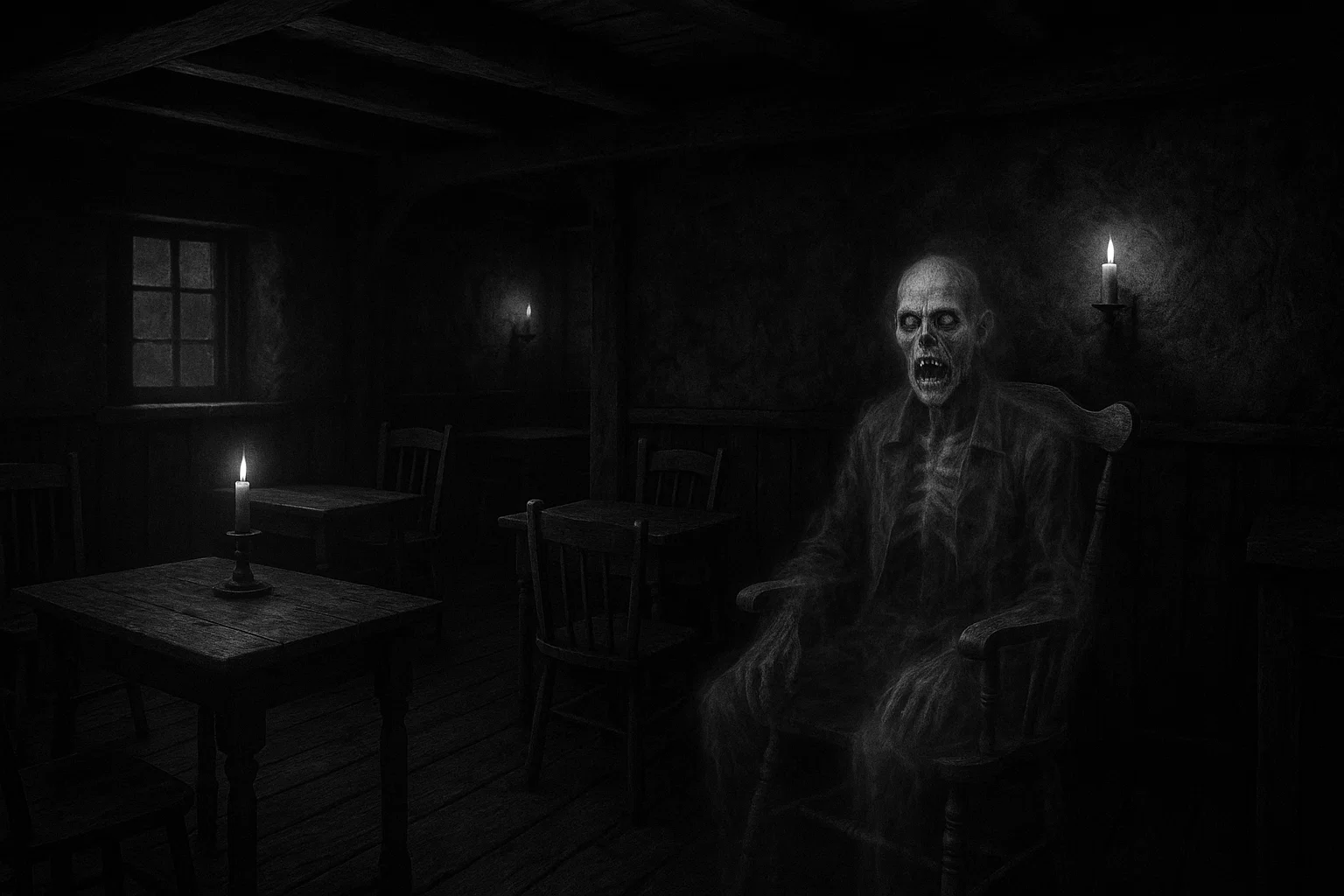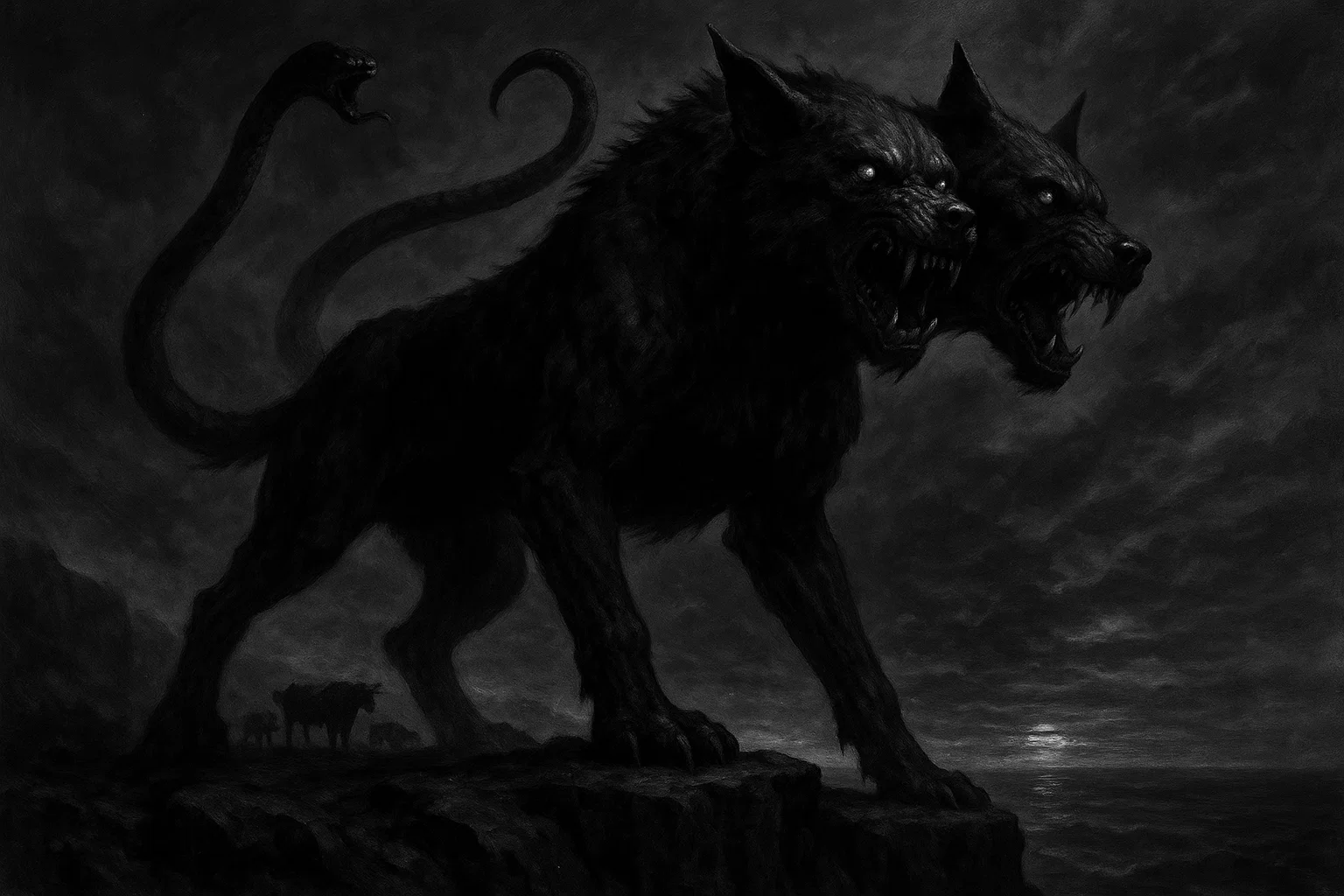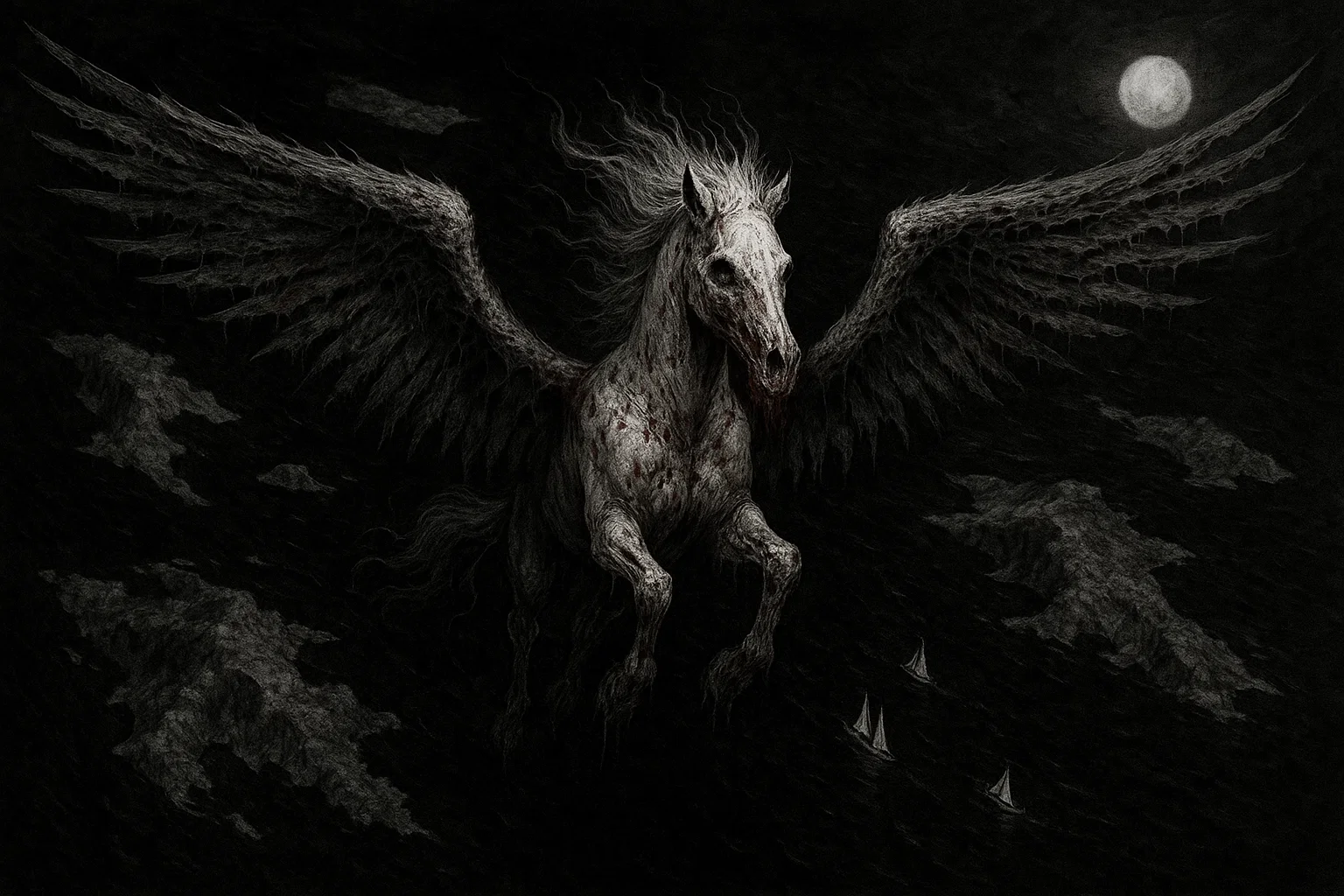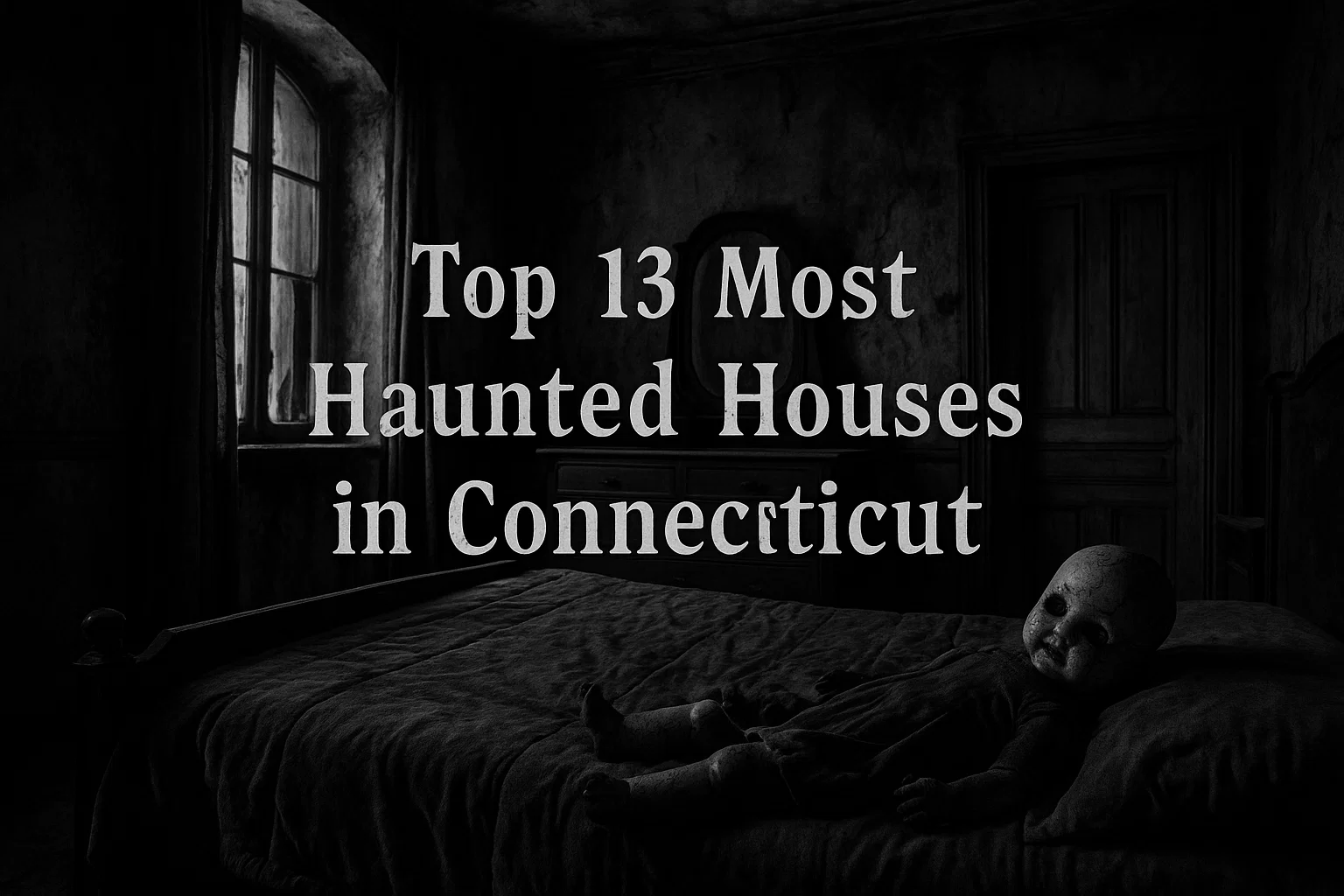In the heart of Thirsk, North Yorkshire, England, a chilling legend lingers around Busby’s Stoop Chair, an oak relic known as the Dead Man’s Chair. This cursed object, tied to the violent criminal Thomas Busby, is said to bring swift and tragic death to anyone who dares sit in it.
In 1702, Busby, a convicted murderer, cursed the chair before his execution, sparking centuries of eerie tales. From wartime tragedies to bizarre accidents, the chair’s dark reputation has made it a focal point of paranormal intrigue.
Now suspended in the Thirsk Museum to prevent further misfortune, Busby’s Stoop Chair remains a haunting enigma.
Summary
Busby’s Stoop Chair Curse History
The story of Busby’s Stoop Chair begins in a web of crime, betrayal, and violence in 17th-century North Yorkshire. Thomas Busby, a notorious figure born around 1670, was a volatile man known for counterfeiting coins and running a seedy inn near Sandhutton crossroads.
His life took a deadly turn in 1702 when he murdered his father-in-law and business partner, Daniel Auty, also spelled Awty or Autie in some records. The two men had a turbulent relationship, fueled by greed and mistrust over their illicit coin-forging operation.
Their falling-out reached a boiling point when Auty, in a heated argument, sat in Busby’s cherished oak chair at the inn. Enraged, Busby bludgeoned Auty to death with a hammer, a brutal act that sealed his fate.
Busby was arrested and tried at the York Assizes in July 1702. Found guilty, he was sentenced to hang at Sandhutton crossroads, a stone’s throw from his inn, later called the Busby Stoop Inn.
As he faced execution, Busby’s final moments were steeped in malice. Local lore claims he was granted a last drink in his favorite chair at the inn. As constables dragged him away, he cursed the chair, vowing that anyone who sat in it would face a gruesome demise.
Another account suggests he shouted the curse while intoxicated during his arrest, his words dripping with venom. His body was gibbeted—hung in chains and coated in tar—as a grim warning, swaying near the inn for months.
The Busby Stoop Inn, named after the gibbet or “stoop,” became a hotspot for dark tales.
Over the centuries, the chair remained in the inn, drawing curious patrons and thrill-seekers. Tragedies began to pile up.
In 1894, a chimney sweep reportedly sat in the chair and was found dead days later, his body mangled in a freak accident. During the early 20th century, a fire at the inn claimed lives, with whispers that the chair’s curse fueled the blaze.
In the 1960s, a local drunkard who boasted about sitting in the chair was found dead in a ditch, his death ruled a suicide under mysterious circumstances. These incidents, though often lacking precise records, built the chair’s fearsome reputation.
By the 1970s, the chair’s deadly legacy became undeniable. A string of bizarre accidents—falls, crashes, and sudden illnesses—plagued those who sat in it.
In 1978, the inn’s landlord, Tony Earnshaw, donated the chair to the Thirsk Museum, insisting it be hung from the ceiling to prevent further sittings. Museum staff have since reported strange occurrences: flickering lights, cold spots, and an eerie sense of being watched near the chair.
A 2005 incident saw a cleaner briefly touch the chair while adjusting its display, only to suffer a severe allergic reaction hours later, requiring hospitalization. These events, combined with the chair’s dark past, suggest a supernatural force tied to Busby’s rage or Auty’s untimely death.
A twist in the tale came in 2008 when furniture historian Dr. Adam Bowett examined the chair. He dated it to 1840, citing its machine-turned spindles, typical of Caistor chairs made by John Shadford in North Lincolnshire.
This finding suggests the chair may not be the one Busby cursed, yet locals argue the curse could have transferred to a replacement chair or that Busby’s spirit lingers in the inn itself.
Despite this, the Busby Stoop Chair remains a symbol of dread, its history steeped in murder, betrayal, and inexplicable misfortune.
You May Also Like: Amon: The Wolf-Headed Marquis of Hell Tied to Ancient Gods
Busby’s Stoop Chair Curse Manifestations
The curse of Busby’s Stoop Chair has spawned chilling stories of death and misfortune. While many accounts are anecdotal, lacking precise documentation, the following are the most detailed and widely discussed incidents, each painting a vivid picture of the chair’s alleged power.
| Date | Witness/Incident | Details | Outcome |
|---|---|---|---|
| 1894 | John Hargreaves (Chimney Sweep) | Sat in chair on a dare, found crushed in a field three days later. | Death (accident) |
| Early 1900s | Unnamed Local Man | Sat in chair, died in a mysterious accident days later. | Death (unverified) |
| 1920s | Unnamed Pub Patron | Sat in chair, committed suicide under unclear circumstances. | Death (suicide, unverified) |
| 1940–1945 | Canadian Airmen (e.g., James O’Connor, Robert Tremblay) | Multiple airmen sat in chair, died in WWII missions. | Deaths (war-related) |
| 1960s | Unnamed Local Drunkard | Boasted about sitting in chair, found dead in a ditch (suicide). | Death (suicide, unverified) |
| July 14, 1972 | David Harper (Roofer) | Sat in chair, fell from roof the next day, died of head injuries. | Death (accident) |
| May 2, 1976 | Margaret Ellis (Cleaning Lady) | Fell into chair, died of undiagnosed brain tumor three weeks later. | Death (illness) |
| February 19, 1978 | Peter Thompson (Delivery Man) | Sat in chair, died in car crash same day. | Death (accident) |
| March 17, 2005 | Sarah Jenkins (Museum Cleaner) | Touched chair, suffered severe allergic reaction. | Survived (hospitalized) |
| 2020–2025 | No Incidents | Chair remains suspended; no further sittings or incidents reported. | None |
The Chimney Sweep’s Gruesome End (1894)
In 1894, a chimney sweep named John Hargreaves visited the Busby Stoop Inn during a night of heavy drinking. Locals dared him to sit in the infamous chair, known even then for its dark reputation. Hargreaves, scoffing at the tale, sat in it and boasted of his bravery.
Three days later, on September 12, 1894, he was found dead in a field near Thirsk, his body crushed as if trampled by a cart. The coroner’s report listed the cause as a freak accident, but villagers whispered that the curse had claimed him.
This story, passed down through oral tradition, marks one of the earliest documented incidents tied to the chair.
World War II Airmen’s Tragic Fates (1940–1945)
During World War II, the Busby Stoop Inn was a popular haunt for Canadian airmen stationed at RAF Skipton-on-Swale, just a mile away. The chair became a test of courage, with airmen daring each other to sit in it.
One such airman, Flight Sergeant James O’Connor, reportedly sat in the chair in 1943. Days later, on June 15, 1943, his Lancaster bomber was shot down over Germany, killing all aboard. Another airman, Pilot Officer Robert Tremblay, sat in the chair in 1944 and vanished during a mission over France on August 3, 1944.
Locals claimed at least a dozen airmen who sat in the chair never returned, though the high casualty rate of RAF Bomber Command—44% of 125,000 aircrew—complicates these claims. Still, the pattern fueled the curse’s legend.
The Roofer’s Fatal Fall (1972)
In July 1972, a 32-year-old roofer named David Harper visited the Busby Stoop Inn with colleagues after a day’s work. Egged on by friends, Harper sat in the chair, laughing off warnings from the landlord. The next morning, July 14, 1972, he fell from a rooftop in Thirsk while repairing a chimney, suffering fatal head injuries.
His death was ruled an accident, but coworkers noted he seemed unusually distracted that day, as if haunted by an unseen force. This incident, reported by locals, became a turning point in the chair’s modern infamy.
The Cleaning Lady’s Sudden Illness (1976)
In April 1976, a cleaning lady named Margaret Ellis, aged 54, was working at the Busby Stoop Inn. While dusting, she tripped and fell into the chair, sitting briefly before scrambling up in panic.
Three weeks later, on May 2, 1976, Ellis collapsed at home and was diagnosed with a previously undetected brain tumor. She died days later.
Her family claimed she had been healthy prior to the incident, and locals linked her death to the curse, citing the chair’s ability to strike in unpredictable ways.
You May Also Like: The Statue | Horror Story
The Delivery Man’s Car Crash (1978)
In February 1978, a delivery driver named Peter Thompson, aged 27, stopped at the Busby Stoop Inn to drop off supplies. Intrigued by the chair’s legend, he sat in it despite warnings from the barmaid.
Later that day, February 19, 1978, Thompson’s van veered off the A61 road near Thirsk and crashed into a tree, killing him instantly. The police report cited slippery roads, but locals believed the curse was to blame.
This incident was the final straw, prompting landlord Tony Earnshaw to donate the chair to the Thirsk Museum.
The Cleaner’s Allergic Reaction (2005)
In March 2005, a museum cleaner named Sarah Jenkins, aged 41, was adjusting the display of Busby’s Stoop Chair at the Thirsk Museum. While not sitting in it, she brushed against it, causing it to sway.
That evening, March 17, 2005, Jenkins suffered a severe allergic reaction, requiring emergency treatment. She survived but reported feeling an eerie chill when touching the chair.
Museum staff, already wary, tightened protocols to prevent further contact, reinforcing the chair’s ominous aura.
Theories
The mystery of Busby’s Stoop Chair has sparked debate over whether its curse is supernatural or explainable.
Paranormal Perspectives
Thomas Busby’s Curse
Fit: Busby’s curse, uttered in 1702 during his execution, aligns with paranormal beliefs that a dying person’s words carry immense power. His rage over Auty’s murder and the chair’s significance in their dispute could have imbued it with malevolent energy. The string of deaths, from Hargreaves in 1894 to Thompson in 1978, supports this, as many occurred soon after sitting.
Flaw: The chair’s 1840 dating undermines its direct link to Busby. If it’s not the original chair, the curse’s origin is questionable, relying on folklore rather than fact.
Haunted Object (Busby or Auty’s Spirit)
Fit: The chair may be haunted by Busby’s vengeful spirit or Auty’s restless one, given the violent murder tied to it. Objects linked to trauma can retain spiritual energy, explaining incidents like the airmen’s deaths and Jenkins’ reaction in 2005. The chair’s eerie presence in the museum—cold spots, flickering lights—supports this.
Flaw: No verifiable paranormal activity, like apparitions, has been recorded. The 1840 dating suggests the chair wasn’t present during the murder, weakening the haunting theory.
Supernatural Portal
Fit: The chair could act as a conduit for malevolent entities, triggered by physical contact. This explains the variety of deaths—accidents, illnesses, suicides—as entities might exploit victims’ vulnerabilities. The 2005 incident, where Jenkins merely touched the chair, suggests a broader supernatural influence.
Flaw: This theory is speculative, lacking evidence of paranormal entities. The diverse nature of deaths could simply reflect coincidence rather than a portal’s influence.
Residual Malevolent Energy
Fit: The chair may hold residual energy from Busby’s violent life or Auty’s murder, affecting those who interact with it. This aligns with paranormal theories about objects absorbing emotional trauma, explaining the chair’s consistent link to misfortune across centuries.
Flaw: The lack of scientific evidence for residual energy and the chair’s later dating make this theory less plausible. It relies heavily on belief rather than observable phenomena.
You May Also Like: Photographs from Another World | Horror Story
Rational Perspectives
Power of Suggestion
Fit: Psychological suggestion can cause anxiety or recklessness, leading to accidents. For example, Harper’s distraction before his 1972 fall could stem from fear of the curse. The chair’s reputation, amplified by local tales, might subconsciously influence behavior, explaining many incidents.
Flaw: Not all victims, like Ellis in 1976, were aware of the curse before their misfortune. This suggests suggestion alone may not account for all cases.
Coincidence and Confirmation Bias
Fit: With countless people sitting in the chair over centuries, some deaths are statistically inevitable. Confirmation bias leads people to focus on deaths (e.g., Thompson’s crash) while ignoring non-events. The high WWII airman casualty rate supports this, as their deaths were likely war-related.
Flaw: The clustering of deaths in the 1970s, like Harper, Ellis, and Thompson, seems unusually frequent for mere chance, keeping the curse’s mystery alive.
Folklore Exaggeration
Fit: The chair’s legend likely grew through oral storytelling, with details embellished over time. The 1894 Hargreaves story, for instance, lacks primary records, suggesting exaggeration. The 1840 dating further implies the chair’s link to Busby was fabricated or misattributed.
Flaw: The consistency of stories across centuries, from 1894 to 1978, suggests a kernel of truth, as unrelated incidents were tied to the chair without apparent motive.
Environmental Factors
Fit: The inn’s environment—poor lighting, uneven floors, or even toxins like mold—could have contributed to accidents or illnesses. Ellis’s 1976 tumor, for example, might have been exacerbated by an environmental trigger at the inn.
Flaw: Environmental factors don’t explain incidents outside the inn, like Thompson’s 1978 crash, or the specific link to sitting in the chair.
You May Also Like: Battle House Renaissance Hotel Haunting: Room 552 Secrets
Busby’s Stoop Chair vs Other Cursed Objects
Busby’s Stoop Chair shares eerie parallels with other cursed objects worldwide:
| Cursed Object | Origin | Nature of Curse | Attributed Incidents | Current Location |
|---|---|---|---|---|
| Hope Diamond | 1660s, India | Misfortune, death | Owners faced bankruptcy, suicides | Smithsonian, USA |
| Tutankhamun’s Curse | 1922, Egypt | Death to tomb disturbers | Excavation team deaths | Egypt |
| Dybbuk Box | 2001, USA | Possession, bad luck | Owners reported nightmares, illness | Private ownership |
| Anguished Man Painting | 2000, eBay | Depression, suicide | Owners felt suicidal urges | Unknown |
| Myrtles Mirror | 1800s, USA | Haunting, death | Ghostly figures seen, deaths | Myrtles Plantation, USA |
| James Dean’s Porsche | 1955, USA | Fatal accidents | Owners died in crashes | Porsche Museum, Germany |
| Crying Boy Painting | 1950s, Italy | Fires | Houses burned, painting survived | Various (often destroyed) |
| Ring of Silvianus | 4th century, Britain | Theft curse | Curse tablet found, bad luck | Museum of Somerset, UK |
| Robert the Doll | 1904, USA | Possession, misfortune | Moving, causing harm | East Martello Museum, USA |
| Annabelle Doll | 1970s, USA | Demonic possession | Attacks, paranormal activity | Private (Warrens’ collection) |
| Cursed Opal Gems | Ancient times, various | Bad luck, death | Owners faced tragedies | Various |
| Weeping Woman Statue | 1900s, Mexico | Misfortune to owners | Owners reported accidents, illness | Museum in Mexico |
Busby’s Stoop Chair stands out for its specific trigger—sitting—and its long history of anecdotal deaths, akin to the Hope Diamond or Robert the Doll. Its museum display mirrors preserved artifacts like the Ring of Silvianus, emphasizing its cultural significance.
Is Busby’s Stoop Chair Curse Real?
The Busby’s Stoop Chair remains a haunting mystery. Believers point to its grim track record—Hargreaves’ 1894 death, WWII airmen’s losses, and the 1970s tragedies—as evidence of a supernatural force, perhaps Busby’s vengeful spirit or a cursed energy tied to his crime.
The chair’s eerie presence in the Thirsk Museum, coupled with reports of cold spots and flickering lights, keeps the legend alive. Yet, skeptics highlight the chair’s 1840 dating, which disconnects it from Busby, and argue that coincidence, suggestion, and folklore explain the deaths. The high WWII casualty rate and lack of primary records for many incidents bolster this view.
Today, the chair hangs untouched in the Thirsk Museum, a chilling exhibit drawing paranormal enthusiasts and curious tourists.
No deaths have been reported since its suspension in 1978, suggesting the curse may be dormant—or never existed. Whether a true cursed object or a product of human imagination, Busby’s Stoop Chair endures as a captivating piece of North Yorkshire’s dark heritage, its story a blend of history, tragedy, and the unknown.







